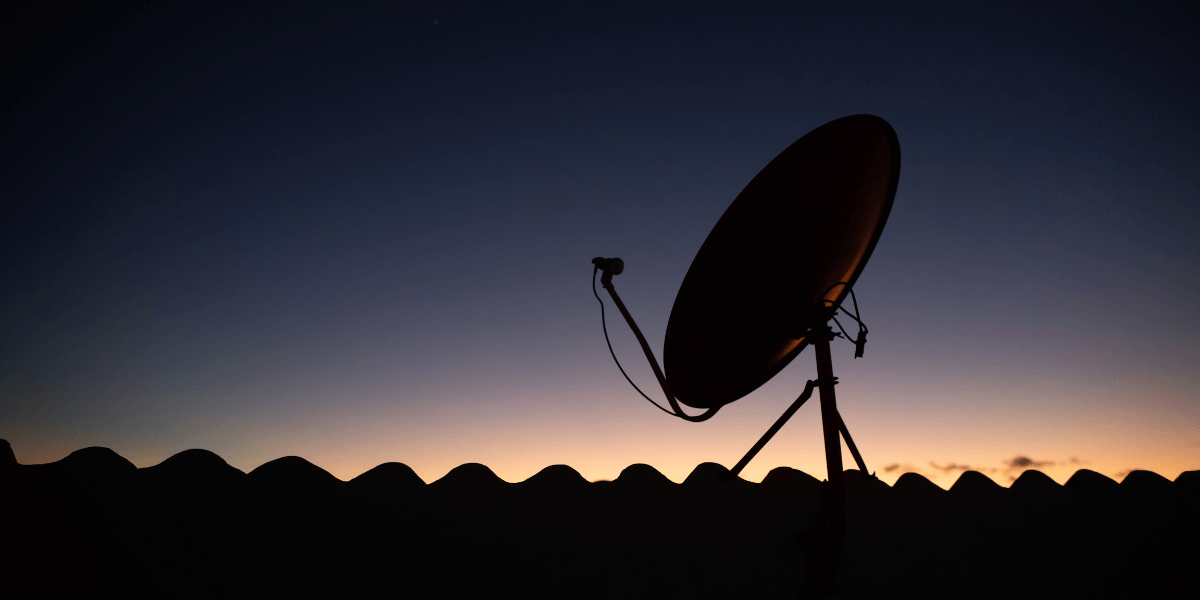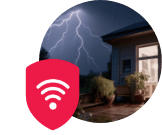The Future of Satellite Internet

Table of Contents
Imagine living in a remote mountain cabin, sailing across the open ocean, or working from a village far from urban centers. Until recently, these scenarios meant sacrificing reliable internet connectivity. Thanks to revolutionary advances in satellite technology, high-speed internet is becoming possible virtually anywhere on Earth.
Satellite internet isn’t just changing; it’s evolving at breakneck speed. From new low-Earth orbit constellations to advanced technology that dramatically reduces latency, these innovations are redefining what’s possible for global connectivity. The implications stretch beyond simply checking email in remote locations—they extend to bridging the digital divide, supporting emergency communications during disasters, and enabling new applications across industries.

Satellites that slash latency
The Evolution of Satellite Internet Technology
From Geostationary to Low Earth Orbit (LEO)
Traditional satellite internet used geostationary (GEO) satellites positioned approximately 22,000 miles above Earth [1]. While effective for coverage, these systems suffered from high latency—the delay between sending a request and receiving a response—often exceeding 600 milliseconds [2]. This delay made real-time applications like video conferencing and online gaming frustrating or impossible.
Enter Low Earth Orbit (LEO) satellites. Orbiting just 300-1,200 miles above Earth’s surface, these satellites slash latency to as low as 20-30 milliseconds—comparable to many ground-based connections [3]. Companies like SpaceX with Starlink, OneWeb, and Amazon’s Project Kuiper are deploying vast constellations of these smaller satellites, creating networks that provide high-speed, low-latency coverage almost anywhere.
Technological Advancements Driving Change
Today’s satellite internet systems incorporate several key advancements:
- Enhanced bandwidth capabilities: Modern satellites utilize higher frequency bands like Ka-band and V-band, dramatically increasing data transmission rates.
- Inter-satellite communication: Advanced constellations use laser links between satellites, reducing dependence on ground stations and improving coverage over oceans and remote regions.
- Phased array antennas: These flat, electronically steered antennas replace large mechanical dishes, making user terminals smaller and more practical for consumers.
- Signal processing improvements: Advanced algorithms and processing power enable satellites to handle more connections simultaneously and adapt to changing conditions.
These developments have transformed satellite internet from a last-resort option to a competitive alternative to fiber and cable in many areas.

Satellite’s top contenders 2025
Major Players Reshaping the Satellite Internet Landscape
Starlink
SpaceX’s Starlink has emerged as the most visible player in the new satellite internet space. With over 7,000 satellites already deployed and plans for a constellation numbering more than 40,000, Starlink offers speeds between 50-220 Mbps and latency as low as 20 milliseconds in many areas [3].
Starlink’s aggressive deployment strategy has allowed it to expand service to over 100 countries quickly. The company continues innovating with Direct-to-Cell technology that enables standard mobile phones to connect directly to satellites without cellular coverage.
OneWeb
Recently acquired by the Eutelsat Group, OneWeb targets enterprise and government applications rather than individual consumers. With nearly a complete constellation of satellites, OneWeb partners with telecommunication providers to extend their reach into remote areas.
While Starlink targets individual consumers directly, OneWeb has taken a different approach by focusing on business partnerships. Their strategy centers on serving industries with demanding reliability requirements such as shipping companies, airlines, and government agencies. These sectors typically require extremely dependable connections and have the budget to invest in premium service offerings.
Project Kuiper
Amazon’s Project Kuiper represents a significant competitive threat to established providers. Though still in early development, Amazon plans to deploy over 3,200 satellites by 2029 [3]. The company’s vast resources and existing cloud infrastructure provide advantages for integrating satellite connectivity with other services.
Project Kuiper’s first production satellites are set to launch in early 2025, with initial commercial service expected to follow. Amazon’s established customer relationships and global presence position it well to scale once service begins rapidly.
Traditional Providers Adapting
Established satellite providers like Viasat and Hughes Network Systems aren’t standing still. Both companies are developing hybrid approaches that combine GEO and LEO satellites to offer improved performance while leveraging existing infrastructure.
Established satellite providers have built up valuable expertise over many years in the industry. Their experience has led them to develop combined systems using traditional high-orbit satellites and newer low-Earth orbit technology. This hybrid approach creates advantages in service reliability and consistent coverage across different regions, especially while newer companies that rely solely on LEO satellites continue to work through their early operational challenges.
Bridging the Digital Divide
Connecting the Unconnected
The most profound impact of advanced satellite internet is its potential to connect billions of people worldwide without reliable internet access. According to the UN, more than 20% of the global population lacks access to even 4G network coverage, rising to over 73% in parts of Africa [4].
Satellite internet bypasses the need for extensive ground infrastructure, bringing connectivity to areas where laying fiber or building cell towers would be prohibitively expensive or logistically impossible. This democratization of access has far-reaching implications for education, healthcare, economic opportunity, and social inclusion.
Rural Broadband Solutions
In developed countries, satellite internet addresses persistent rural connectivity challenges. Rural residents often face limited or non-existent broadband options due to the economics of infrastructure deployment. LEO satellite systems provide a viable alternative that doesn’t require the population density to justify fiber installation.
This matters significantly for rural economic development, as reliable broadband increasingly determines where businesses can operate and where people choose to live. Remote work opportunities, telehealth services, and online education depend on quality internet connections.

The impact on emergency response
Industry Applications Transforming with Satellite Connectivity
Mobile Connectivity Without Borders
The integration of satellite technology with mobile devices creates unprecedented mobility. Continuous connectivity becomes possible virtually anywhere, from cruise ships crossing oceans to expedition vehicles traversing deserts.
Starlink’s Direct-to-Cell service represents a breakthrough in this space, enabling standard smartphones to connect directly to satellites without specialized equipment. This technology could eventually eliminate cellular dead zones globally.
Internet of Things (IoT) Expansion
Satellite-integrated IoT systems extend the reach of connected devices beyond cellular coverage areas. Applications include:
- Remote environmental monitoring in wilderness areas
- Agricultural sensors tracking soil conditions and crop health
- Infrastructure monitoring across vast pipeline or power line networks
- Shipping container tracking across oceans
Emergency and Disaster Response
When natural disasters destroy local infrastructure, satellite internet provides crucial backup connectivity. Recent hurricanes, wildfires, and earthquakes have demonstrated the vital role of satellite communications in coordinating relief efforts and reconnecting affected communities.
Military and emergency services increasingly rely on satellite internet to maintain command and control capabilities in challenging environments. The rapid deployment capabilities of modern satellite terminals allow for establishing communications within minutes of arrival at a disaster site.

The downside of satellite
Challenges and Limitations
Regulatory Hurdles
Satellite internet providers face complex regulatory challenges spanning multiple countries. Spectrum allocation, market access permissions, and orbital slot coordination require navigating a patchwork of national and international regulations.
SpaceX recently sought additional E-band spectrum access in Italy to enhance communication between ground stations and satellites, but faced delays as Italian authorities awaited broader EU guidance on spectrum allocation policies.
Space Sustainability Concerns
The rapid deployment of thousands of satellites raises legitimate concerns about space sustainability. Issues include:
- Space debris risk: Even with careful management, the sheer number of satellites increases collision risks
- Astronomical interference: Satellite constellations can interfere with astronomical observations, particularly during twilight hours
- Orbit congestion: Popular orbital shells risk becoming overcrowded without proper coordination
Performance Limitations
While dramatically improved over previous generations, satellite internet still faces some inherent limitations:
- Weather sensitivity: Heavy rain or snow can temporarily degrade service, particularly in Ka-band systems
- Capacity constraints: Bandwidth is shared among users in a coverage area, potentially leading to congestion during peak usage times
- Power requirements: User terminals require consistent power sources, limiting deployments in some remote areas

Bridging the digital divide globally
Global Impact and Digital Equality
Transforming Education and Healthcare
In remote and underserved communities, satellite internet enables access to educational resources and healthcare services previously unavailable. Students can access online learning platforms, while patients can consult with specialists via telemedicine—all without traveling to distant urban centers.
These capabilities help address fundamental inequalities in access to essential services. A student in a remote village can access the same digital library as one in a central metropolitan area. At the same time, rural patients can receive expert medical consultations without traveling hours to reach specialists.
Economic Empowerment Through Connectivity
Reliable internet access creates economic opportunities in previously isolated communities. Local businesses can access global markets, individuals can participate in the digital economy through remote work, and communities can develop new enterprises based on their unique strengths and resources.
Find Satellite Internet Options in Your Area
Ready to explore satellite internet options available where you live? Whether you’re in a rural area with limited connectivity choices or simply interested in alternatives to traditional providers, satellite internet might be your solution.
The landscape of satellite internet is changing rapidly, with new providers entering the market and existing ones expanding their coverage and capabilities. To find the best options for your specific location, enter your zip code here.
Sources
[1] Noaasis.noaa.gov. “GOES Overview"
[2] Satellitetoday.com. “Delays and Dilemmas"
[3] Technologymagazine.com. “The Future of Satellite Internet and Starlink’s Role Explained"
[4] Hamilton-barnes.com. “What is the future of satellite internet?"












 Call
Call 

 Access Your Account
Access Your Account